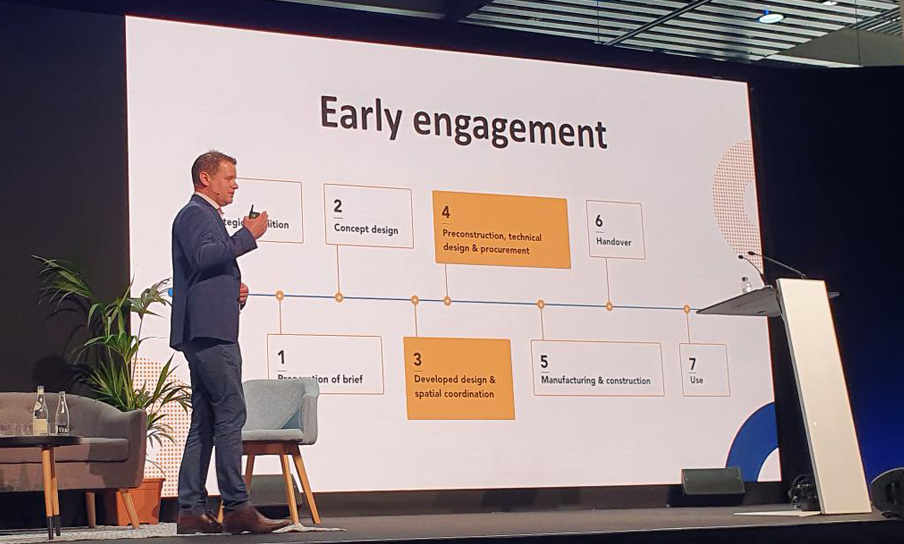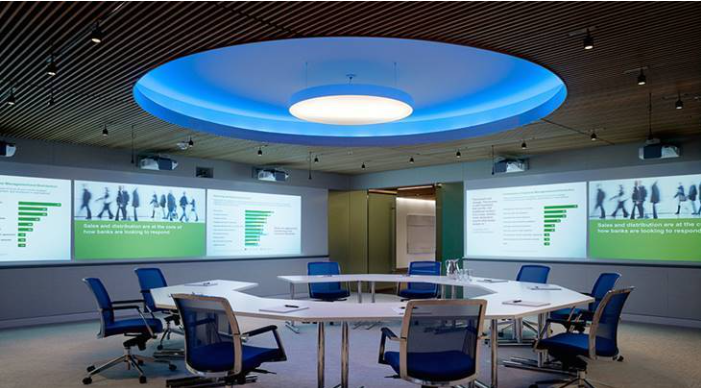Smart Ready Buildings

September 14, 2022
Smart Buildings
What do you think of when someone says smart building? How many times has someone said I want this building to be smart?
Smart buildings mean very different things to different people. Some think of bucket loads of sensors, tons of data and maybe screens everywhere, some think of energy efficiency, and others imagine Artificial Intelligence (AI) receptionists and robot cleaners.
When designing a building today, I believe we need to concentrate on them being smart ready. We start designing buildings years before they will reach Practical Completion (PC) and, given the rate at which technology evolves, if we even attempt to plan the smart technologies now, they will be extinct by the time the project reaches the site let alone PC. Instead, we need to design smart ready buildings.
So, what are we really trying to achieve?
Optimising for energy efficiency is a given, but critically smart ready buildings should be able to adapt their operation to the ever-changing needs of the occupant. Future buildings need to be agile and offer insights as to what might improve the user experience for its occupants, improve well-being and thus improve productivity.
Remember, we’re not only talking about smart buildings but smart campuses and smart cities – the volume of data means that no human could possibly see these insights on their own, so we need to get the data ready to be analysed by AI Models and Machine Learning (ML) Algorithms.
What types of insights might a smart building offer?
Well, that might be different for every company, city or campus out there, and furthermore, if we knew what those insights were now, then what would the point be in undertaking projects to find out? There could be correlations between building performance and staff performance. There could also be links between trends in occupancy and absenteeism. Weather and bin usage? Queues at the canteen and customer satisfaction?
I believe Isaac Asimov put it very well when he said:
“The most exciting phrase to hear in science, the one that heralds new discoveries, is not “Eureka” but “That’s funny…”
In other words, the things we were not expecting are the most insightful. Smart buildings are not a case of one and done or problem solved. We want to continually learn new insights and make iterative improvements. So, if we make our buildings smart ready, then these insights will start to flow immediately after the First Day of Business (FDOB).
Smart buildings also need to be secure, that’s a given too… or is it?
Today we are focused on the security of our IT systems, user awareness training, and social engineering attacks, but then we overlook the half a dozen IOT sensors we just installed that send data to 3rd Party cloud services, some of which we never even see or use. We worry about GDPR and Personally Identifiable Information (PII) but often overlook the occupancy sensor or people counter. By analysing just, the pure volume of data from these types of sensors, even in their encrypted form, cyber criminals could tell a lot about what is happening in a building, room or desk!
What are the Main Activities for a smart ready building?
- Secure communications
- Collect the data
- Garner insights from the data
- Encourage, facilitate & support innovation in the future
What practical things can be done when planning for a smart ready building?
- Early engagement is key, probably every issue we see as an MSI is related to late engagement. Either late engagement of the Digital Building Consultant (DBC), Master Systems Integrator (MSI) or even late engagement with the General Contractor (GC) or Specialist Sub Contractors, who don’t understand or haven’t allocated enough time to deliver their smart ready elements.
- Appoint your DBC at the Concept stage, they need to understand your business and future plans just as much as the architects.
- Appoint your MSI in Stage 3: Developed Design & Spatial Co-Ordination, so they can take the brief from the DBC and agree on an appropriate data model for your data lake. Agree on the basic systems that need to be ingested into the data lake from the beginning; BMS, LCS, Metering, Life Safety etc., while leaving flexibility for future systems. Your MSI should take top-level responsibility for every piece of data that ultimately comes from the building.
- Consider security and what network topology will be required to carry your smart building data. What protocols will be used? Get your IT and Information Security Management System (ISMS) teams involved. Vet potential vendors, what is their security posture? Will you allow data to be housed outside your own network?
- Include the smart ready responsibilities in tender packs to GCs and Specialist Sub-Contractors. Your MSI can help define these.
- Engage Specialist Sub-Contractors early in the submittal process and find out what data is their proposed equipment capable of sending (sometimes they are not clear on this themselves) – this can reduce the number of 3rd party sensors required at a later date. Think beyond BMS and LCS – think Catering Equipment, Audio Visual, Waste Compactors and Lift Vendors.
- Think about what additional systems may need to read or write to the data lake in the future. FDD (Fault Detection & Diagnostic Systems), ERP Systems or CMMS/CAFM (Facilities Management Systems).
- The more data-rich and diverse the data lake, the more insights you will get once the building is occupied and will evolve over the lifetime of the building.
- In stage 4, engage with suppliers to plan the smart technologies that will help you with your business needs, perhaps space analytics or desk booking. Start the procurement process with your specialist Sub Contractors at this point so those technologies are ready for PC.
- Consider security again, this time for hardware. Define a device qualification process i.e., a minimum set of standards that hardware should achieve before being allowed on your network. Don’t forget about un-connected devices (i.e., Devices with network interfaces that won’t be connected now but could potentially be inadvertently connected in the future). Consider Penetration testing of devices and a device hardening process to better secure devices than they come out of the box.
In summary, don’t try to pack every shiny new piece of technology in for Practical Completion, that’s not what it’s about. Work with the basic systems you have and design the data model.
A smart ready building’s journey is only in its infancy at PC, systems can be upgraded and added to over the building’s lifetime if proper infrastructure and data model has been defined pre-construction.
The exciting bit starts when the building moves into use. It’s how we use this data that truly makes the building smart.
How agile can this building or campus become? How do we maximise space utilisation? Smart commercial buildings can have multiple innovative uses that span well beyond the 9-5 pm of the daily workday. Public, private, work, entertainment even artistic uses spring to mind.
Applying AI Models and Machine Learning to this data also leads to predictive maintenance resulting in less downtime, energy savings and fewer disruptions in the building.
For a truly smart building to emerge we need to get ready first!
Reach out to us today to discover our innovative solutions and discuss your specific needs.
Together we can transform your building into a smart, efficient and sustainable space.


.png)
.jpg)




%201.png)

